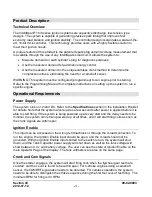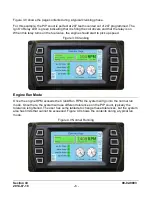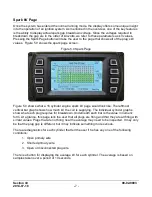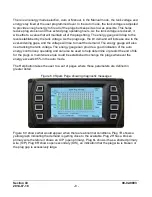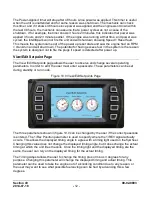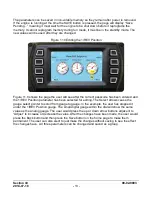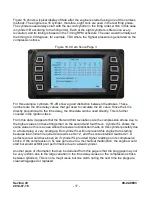
Section 40
00-02-0893
2014-07-18
-
17 -
Figure 16 shows a typical display of data after the engine is started using one of the camless
methods. The engine is a 16 cylinder; therefore, eight coils are used in the test firing phase.
The cylinders used always start with the second cylinder in the firing order, which in this case
is cylinder 1R according to the firing order. Each of the eight cylinders is fired once every
revolution, and its timing is based on the Timing RPM schedule. The user would normally set
the timing to 0.00 degrees, for example, TDC where the highest pressure is generated on the
compression stroke.
Figure 16.0 Cam Score Page 3
For this example, cylinders 1R-4R show a good distinction between the strokes. These
numbers are the time delay values that get used to calculate the kV value. Since the kV is
directly proportional to the time delay, the time data can be used directly. This is further
covered in the ignition class.
From this data, it appears that the first and third revolutions are the compression stroke due to
the higher values on these firings than on the second and fourth revs. Cylinder 5L shows the
same value so this is a case where there was no distinction made on this cylinder possibly due
to a fouled plug or very small gap. But cylinder 5L will not prevent this engine from starting
because the minimum required score was set to 12, and the score obtained reached 21. A
perfect score would have been 24 if cylinder 5L provided higher readings on its compression
stroke. If the compression in 5L was gone due to a mechanical malfunction, the engine would
start but would exhibit poor performance due to a dead cylinder.
Another piece of information that can be deduced from this page is that the plug gaps may not
be very uniform due to the large variation in the time delay values on the compression stroke
between cylinders. This is not a major issue but one worth noting the next time the plugs are
cleaned/regapped or replaced.

